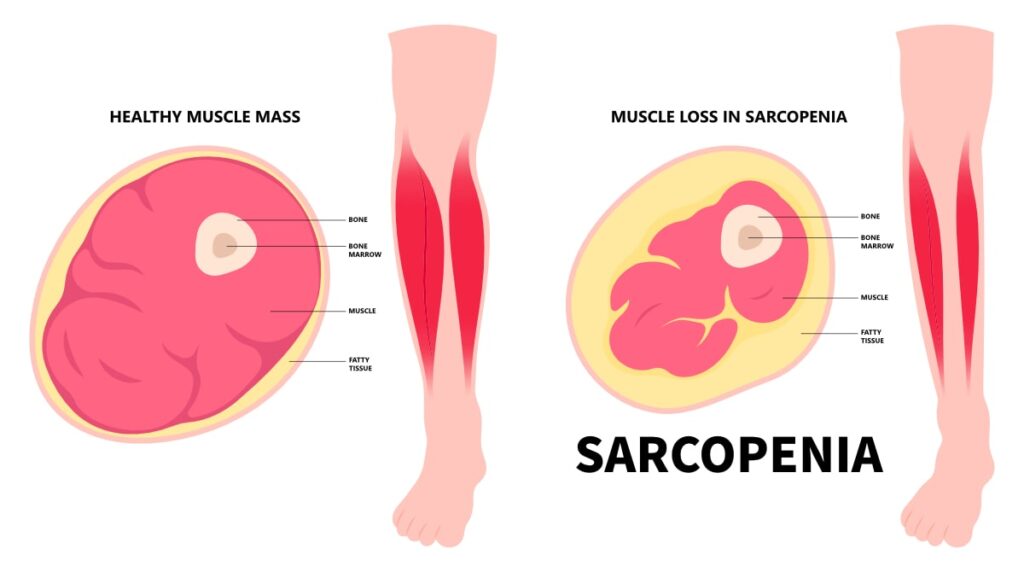Do you have problem climbing stairs, delivering your groceries, or gardening for as long as you used to? It’s not inevitably “just age” talking… What if it’s a symptom your muscles are trying to send you? A discreet but very real phenomenon affects more and more adults after 50, often without us spotting it. And yet, it can be weakened—or even avoided. Curious? We’ll share you everything.
Sarcopenia: When muscles raise the alarm
Behind this somewhat barbaric name deceives a very concrete reality: Sarcopenia is the progressive loss of muscular mass and physical strength. Contrary to popular opinion, it is not a predetermined age-related condition. It is now recognized as a distinct disorder with significant implications for quality of life.
Why is this occuring… and to whom?
While muscles tend to gradually lose weight from the age of 30 ( yes, already! ), the process increases especially around the age of sixty. The cause? A cocktail of factors, often mixed:
Time passing, quite simply…
With age, some hormones that help muscles (like IGF-1 or growth hormone) decrease. Muscle recovery is slower, nutrient absorption becomes less efficient… in short, the body slackens.
Not really “muscle-friendly” habits
Small habits that weaken muscles include skipping meals, avoiding protein, not exercising enough, and sitting or being inactive too much. Inactivity is even the leading risk factor. And don’t forget about vitamin D deficiency, which is widespread in France and impairs muscular tone.
Some quiet diseases.

Diabetes, thyroid disorders, chronic inflammation, and even neurological diseases can exacerbate muscle loss, sometimes without obvious symptoms.
How do you know if your muscles are starting to fail?
You don’t need polished machines to notice the early signs! Here are some war:ning signs to beware:
- You have difficulties rising up from a chair without momentum.
- Climbing a flight of steps makes you feel more out of breath than before.
- Your arms and thighs appear less “tense” than previously.
- You may experience stumbling and loss of balance, as well as increased fatigue without any apparent cause.
- If several of these symptoms apply to you, a brief consultation with your doctor may be beneficial to take stock.
Protecting your muscles: good everyday habits
The good news is that we can make a move! Even at 70, it’s never too late to boost your muscles. All it takes is a little flexibility… and encouragement.
Move smart, but move!
No need to become a marathon runner. The most effective exercises are simple: squats, lunges, light push-ups, stair climbing, or even brisk walking. The key is to move every day, even for ten minutes. Gentle yoga, Pilates, cycling, or swimming are also good allies.
Eat “muscle”!

Protein is the primary fuel for muscles. Aim for 1.2 to 1.5 grams of protein per kilogram of body weight per day. Options include eggs, salmon, lentils, plain yogurt, and even a small amount of cheese.
In terms of vitamins, prioritize vitamin D, calcium, and omega-3 fatty acids (oily fish, almonds, flax oil), while also maintaining adequate water.
What if we got it sorted out?
Limit ultra-processed foods, white sugar, saturated fats, and excessive alcohol, all of which cause unnecessary fatigue in your body.
